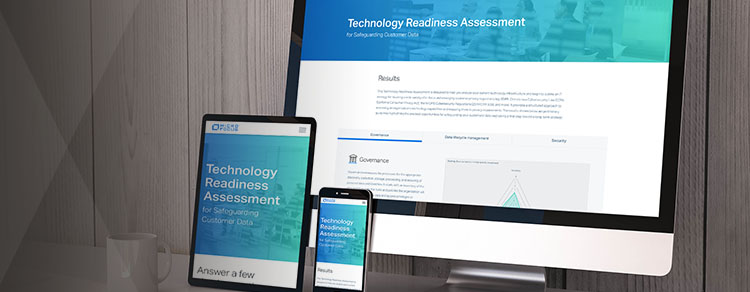Increase your MDF impact by accelerating the customer buying journey
November 3, 2023

(A version of this blog has previously appeared on B2BMarketing.net.)
Alliance partner managers and other partner marketing professionals are often faced with creating joint sales tools to promote and sell their complementary solutions. They frequently use common sales tools—such as brochures, sales presentations, and perhaps an announcement or positioning statement.
There are, however, many tools available for alliance managers. With limited budget and time, the challenge is understanding which tools will add the most value for both companies.
It’s vital to choose sales tools that will accelerate your mutual prospects and customers through their customer journey. This starts with a basic agreement between you and your alliance partner on where your joint sales efforts need the most support along the way.
Let’s look at the first five stages of the journey and discuss some useful joint sales tools.

At this stage, your joint sales tools should help the customer evaluate their situation, identify the challenge and the need, and understand that the two partnering companies are developing complementary solutions together that address the customer’s needs.
|
Aware stage—joint sales tools |
Audience |
|
Mailers and email campaigns |
External |
|
Business articles and success stories |
External |
|
Infographics and statistical fact summaries |
External |
|
Seminars or webinars and event support tools |
External |
|
Presentations (educationally focused) |
External |
|
Videos (educationally focused) |
External |
|
Selling readiness training guides and sales playbooks |
Internal/partner |
These sales tools are most needed when your sales pipeline is not at your desired level and there isn’t enough market awareness of your joint solution or your alliance relationship.
Sales-tool development tips
Sales tools for the Aware stage are designed to get attention and earn mindshare (attention over time). Keep them brief and high level, focusing on the customer’s environment, challenges, and needs. Avoid huge volumes of product/solution detail. You’ll convey details later in the journey.

At the Inform stage, customers are generally aware of their overall challenges and needs. Now they’re actively researching potential solutions, so focus on further educating the customers on how the combined solution addresses those needs—without too much promoting or pitching.
|
Inform stage—joint sales tools |
Audience |
|
Sales messaging maps |
Internal/partner |
|
Sales playbooks and sales guides |
Internal/partner |
|
Technical papers |
External |
|
Business articles, success stories, and case studies |
External |
|
Technical articles and guides |
External |
|
Executive guides and business primers |
External |
|
Infographics |
External |
|
Industry and business insight reports (supporting the joint solution) |
External |
|
Informational and tutorial videos |
External |
|
Seminar or webinar and event support tools |
External |
|
Industry conference presentations |
External |
|
Sales training and readiness presentations |
Internal/partner |
Sales-tool development tips
Make these joint sales tools educational. Don’t sell too heavily. Focus on the customer, not you or your alliance relationship.
Your goal is to provide useful information and establish your credibility. Success stories and case studies are particularly useful for showing how real companies overcame critical challenges to achieve vital business goals using your joint solutions.

At the Consider stage of the customer journey, deploy sales tools that position your combined solution as uniquely able to help them address critical business challenges and achieve their goals. At this point, you’ve turned the corner into proactive selling. Many of the more traditional sales tools fall into this stage, such as product brochures and sales presentations.
|
Consider stage—joint sales tools |
Audience |
|
Partnered solution positioning maps |
Internal |
|
Sales guides |
Internal |
|
Sales battle cards |
Internal |
|
Alliance partner relationship overview brochures |
External |
|
Solution brochures |
External |
|
Solution data sheets |
External |
|
Solution guides |
External |
|
Solution product and performance comparison data sheets and infographics |
External |
|
Solution articles |
External |
|
Customer success stories and case studies |
External |
|
Customer testimonials (written or video) |
External |
|
Email and direct mail campaigns and promotional offers |
External |
|
Partnership campaign or solution landing pages (web) |
External |
|
Campaign sales portals for field sales or resellers |
Internal/partner |
|
Solution overview of tutorial videos |
External |
|
Selling training and workshops |
Internal/partner |
|
Sales storytelling and sales tutorial videos |
Internal/partner |
Sales-tool development tips
Focus on differentiating your joint solution. If your partner is allied with any of your competitors, they may be reluctant to seem to publicly endorse your product over others. In this case, craft your messaging carefully so that it showcases the mutual benefits of the combined solution and the partner relationship without implying the partner’s preference.

In this stage, the target customer has a clear understanding of the issues and recognizes the need to pursue a solution. They are now looking to compare viable alternative solutions that best fit their needs. Effective joint sales tools will help convince the customer that you and your partner, together, offer the best complete solution when compared to alternative choices.
|
Evaluate stage—joint sales tools |
Audience |
|
Solution benchmark results reports |
External |
|
Solution comparison data sheets and infographics |
External |
|
Solution evaluation checklists |
External |
|
Solution cost (TCO) comparison calculators |
External |
|
Solution evaluation and comparison videos |
External |
|
Field sales competitive positioning guides |
Internal |
|
Success stories and failure stories (to showcase the critical need to act now) |
Internal |
|
ROI/expense/TCO calculators |
External |
|
Industry analyst reviews |
External |
|
Demo center promotional support tools |
External |
|
Interactive solution demonstrations and tours |
External |
|
Customized assessment offers |
External |
Sales-tool development tips
Don’t assume that your most formidable competitor is another company. In the world of complex B2B solutions (especially technology solutions), you might often lose not to another company but to the customer’s decision to do nothing. Make sure your sales tools explain why doing nothing is not a viable alternative.

When it’s time for customers to make their purchase decision, it’s often best to use a small number of highly focused sales tools. The tools used at the Decide stage should help push the customer over the decision fence and should focus on special offers and incentives that help close the sale.
|
Decide stage—joint sales tools |
Audience |
|
Special incentive offer collateral |
External |
|
Packaged pricing deals |
External |
|
Proposal-building sales tools |
Internal |
|
Competitive product trade-in program collateral |
External |
|
“Why act now?” presentations and supporting collateral |
External |
Sales-tool development tips
The final stage of the customer purchase decision may not occur simultaneously for you and your alliance partner. For example, a customer may select their production management software well before the platform and products to implement the solution on. At this stage, the joint sales effort can sometimes break down.
A partner that has closed their sale may lack motivation to stay involved over several more weeks to help the other partner complete their sale. Packaged pricing deals can motivate the customer to choose the combined solution, immediately or within a limited time.
The customer journey does not end with the solution purchase. You likely don’t (and certainly shouldn’t) stop communicating with your customer once they become a customer. But often, much of the focus of the alliance is on jointly building new sales, not on addressing post-sales needs. There are two additional customer journey stages to be aware of:

Communicating to new customers is vital to building strong customer relationships and loyalty. Sales tools developed for this stage typically help the customer get the maximum benefits from your product and recognize those benefits as a significant contributor to their total return on their investment.
Examples of joint sales tools used in the Use stage include solution and product usage guides, customer success stories and videos, customer forums or user groups, customer workshops and events, solution application guides and showcases, and solution tuning guides (technical).

Once a customer has become a mature user of your allied solutions, the right sales tools can encourage future purchases by promoting product upgrades, add-on products, or other offerings. At this stage, use joint sales tools to keep customers loyal and engaged.
Joint sales tools here might include customer retention sales playbooks, upgrade program offers (guides or videos); customer loyalty programs and promotions; customer conferences; user groups, special interest groups, or other event promotion tools; or end-of-life migration promotional tools.
While today’s B2B marketers are committed to developing a content strategy, they often don’t exist or are poorly documented when it comes to their partner alliance relationships. Without a documented content strategy, it is difficult to create a strategy for your joint sales tools. So, many alliance marketing teams scramble to develop sales tools and collateral in response to, for example, new product launches, upcoming joint trade shows or conferences, and new sales promotions.
How often do you create technical papers, articles, or other joint sales tools simply to check them off a list? A jointly produced and documented content strategy will help ensure that your content is valuable to your mutual target audience and accelerates your customers along their journey. A good content strategy will also help you set priorities—something that is even more important when your resources are constrained.
We take pride in a team loaded with smarts, wit, and ideas. If you'd like to have a smarter, wittier inbox filled with ideas each month, subscribe here to the MarketReach Blog, and we will let you know when there is something new you might like!

Need us now? Just want to learn more? We’d love to talk.